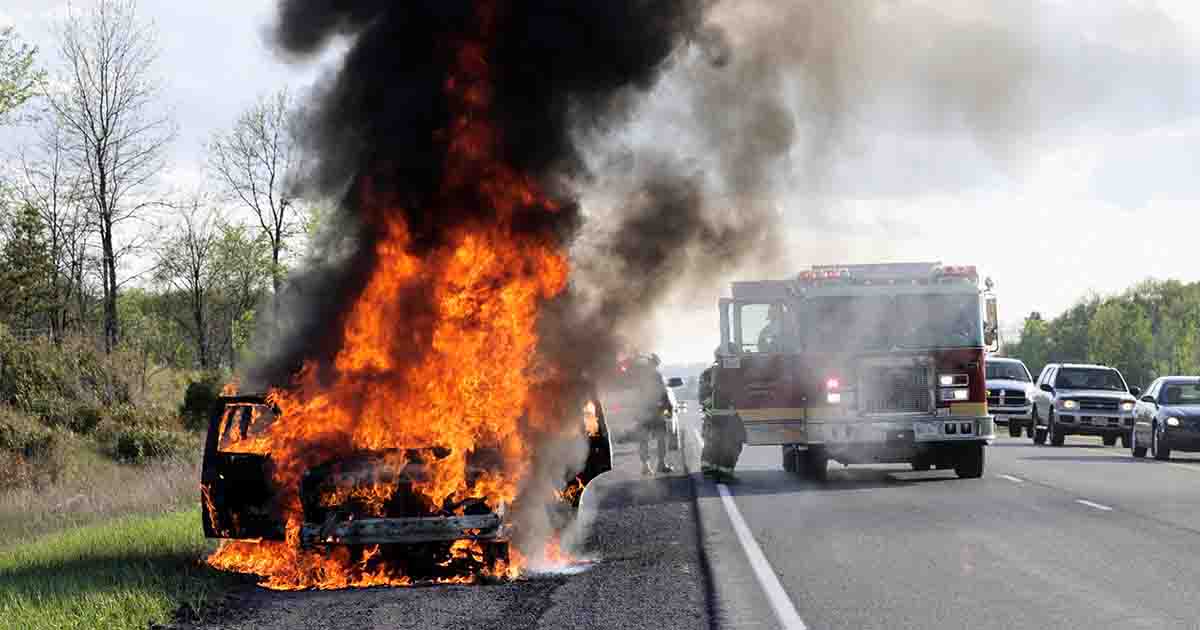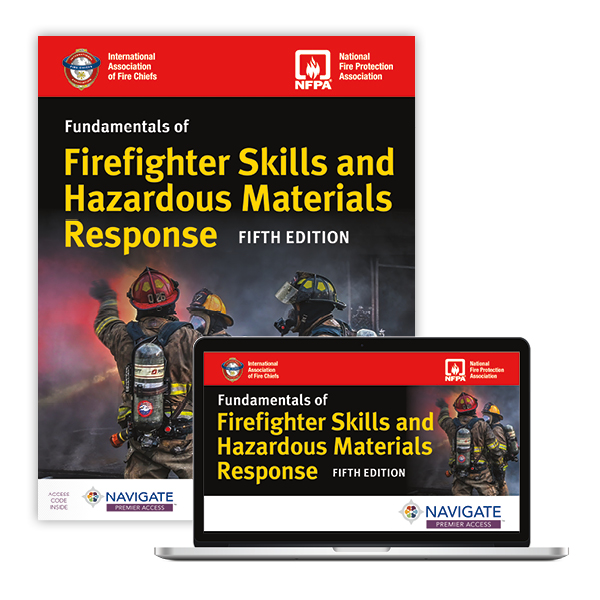How Today’s Firefighters Are Battling Lithium-Ion Battery Fires

Every year, hundreds of lithium-ion battery fires occur in the United States. This number is increasing to alarming new highs as more people rely on devices powered by these batteries. While lithium-ion batteries have revolutionized our world, powering everything from smartphones to electric cars, the fires they fuel are dangerous, alarming, and more challenging to combat than typical fires. To address these dangers, firefighters are adopting innovative strategies and tools to effectively extinguish such fires.
The Public Safety Group sat down with Pat Dunn, a former F16 mechanic in the military, ten-year captain of the Kansas City Fire Department, and author of Fire Apparatus Driver/Operator with Navigate Advantage Access, Fourth Edition, to discuss the role firefighters must take in combatting lithium-ion fires.
Risks of Flashovers and Other Challenges of Lithium-Ion Batteries
Firefighters are of course accustomed to battling challenging fires. Most fires are uncontrolled oxidation processes that require just three elements to burn: heat, oxygen, and fuel. Each day, skilled firefighters remove one of these elements to put out most fires.
Unlike conventional fires, lithium-ion battery fires are characterized by a phenomenon known as thermal runaway, where the heat generated by the battery continues to fuel the fire until it is sufficiently cooled. They can reach temperatures of up to 4,900 degrees Fahrenheit when ablaze. Some fires can require up to 50,000 gallons of water to extinguish, and in some situations, the only solution is to let the battery burn out.
Even after a lithium-ion battery fire is extinguished, there remains a risk of reignition. Additionally, these batteries release hazardous gases like hydrogen, making the fires they cause difficult to control. Such fires cannot be extinguished by smothering with a blanket and tend to spread more rapidly than typical fires.
“When they ignite, the speed that they’ll take a room into flashover is astounding,” says Captain Dunn.
The Increasing Demand for Lithium-Ion Power
The growth of electrical vehicle (EV) use has skyrocketed in recent years, increasing more than 25% worldwide in 2024 compared to 2023. Since 2020, more than 100 new EV models have been introduced in the United States.
For the past thirty years, battery sales have doubled every two to three years, achieving an average growth rate of 33 percent. Over the last decade, with the rise of electric cars, this growth rate has increased to nearly 40 percent. And it’s not just vehicles. Batteries power our cell phones, scooters, tablets, and laptops. This means there are not just more batteries available for purchase, but there are more batteries in our homes than ever before. Captain Dunn points out that the increased use of lithium-ion batteries has also led to a heightened risk of fires.
“I think some of the larger cities are having problems when they're using their e-bikes and their scooters as their main transportation. And then they carry them up into their 15-20 story apartment complex and leave them in the living quarters. Those products typically don't have the quality control that Ford, GM, or Toyota have,” he said, emphasizing that even the most responsible individuals can't control their neighbors' actions. “In a multistory apartment, you don't know what the person next to you is doing.”
The dangers have also spread to areas outside of major cities. Captain Dunn points to the recent opening of Panasonic Energy battery factory just outside of Kansas City. In areas with more single-family homes and fewer apartment buildings, lithium-ion batteries will present a new set of challenges.
“As we start having the charging facilities inside residential structures, I think that's really where we have larger incidents taking place, that's when we're going to really encounter those,” he said. “And we're going to have a structure fire with an EV essentially fueling it.”
Using Out-of-the-Box Firefighting Tactics
The unique challenges presented by lithium-ion battery fires require firefighters to adapt their established methods and employ new techniques. Traditional firefighting tactics, which often involve deploying large volumes of water to suppress flames, are not always effective. Captain Dunn says that his crew learned quickly that these methods would not work well.
“Originally, we were doing high volume water application, but only a minute portion of the water was getting onto the battery. So as a result, we were really wasting a ton of water trying to get 1% of that water into the right spot,” he said. “And a lot of times if we have these car fires on in the interstate, we don't have the water supply to go with the standard tactics.”
In addition to a change in techniques, fire departments are increasingly recognizing the need to advocate for and invest in new tools and techniques to combat these fires. For instance, some departments are exploring the use of specialized nozzle attachments that can direct water underneath vehicles to target the battery, which maximizes the cooling effect while minimizing water waste. Fire-resistant blankets are also being developed to help smother the flames and contain the fire.
The evolving nature of lithium-ion battery fires also demands flexibility and quick thinking from firefighters. Captain Dunn notes that firefighters must be prepared to make quick decisions and adapt their strategies in each individual situation.
“When we have these lithium-ion fires inside a structure, some departments are focusing on pulling the vehicle out of the garage. But we're really having to punt or change our strategies on the fly as the situation changes,” he said. “Initial firefighting tactics are going to be appropriate, but then to actually get full extinguishment, that's when we really need to start thinking out-of-the-box and maybe utilizing our other resources such as the tow companies so that we can actually get a controlled water stream onto the battery.”
Regardless of the specifics of the situation, Captain Dunn says that although the techniques can be complex, the goal remains straightforward.
“It's not about huge amounts of water. It's about getting the water in the right place. And that's the more difficult task.”
Educating the Public on Lithium-Ion Fire Risks
The best firefighting tactic is prevention. Captain Dunn says that education is the key to preventing lithium-ion fires, and it’s up to local departments to keep their citizens informed.
“I think the local schools would be the easiest way to educate them,” he said, suggesting departments can also use billboards or public service announcements to reach out to the community. The public should be taught to only purchase batteries with a safety certification seal, only use manufacturer-approved charging cords, and to recycle batteries safely.
The surge in popularity of e-scooters, e-bikes, and hoverboards, particularly among those under 18, emphasizes the importance of instilling safety practices from an early age. Captain Dunn highlights a crucial lesson he has imparted to his own son about responsible charging habits.
“I’ve told him you only charge that while we’re home. You don’t leave it charging overnight. You leave it in the garage, or you sit it outside.”
Fundamentals of Firefighter Skills and Hazardous Materials Response
Thoroughly revised and updated, the NEW Navigate Premier Access for the Fifth Edition of Fundamentals of Firefighter Skills and Hazardous Materials Response is the must-have training resource for Firefighter I and Firefighter II. Find a wealth of student and instructor support materials, coupled with the most up-to-date content based on NFPA 1010.
Request More Information